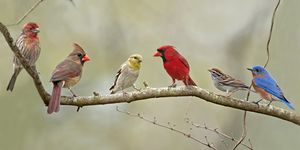Two new national monuments created in Utah and Nevada
On Wednesday, Obama created two new national monuments: The Bears Ears National Monument in southeastern Utah and the Gold Butte National Monument in southeastern Nevada.
Obama enacted the executive power of the Antiquities Act of 1906, consequently protecting approximately 1.35 million acres in Utah and nearly 300,000 acres in Nevada. The Washington Post writes, “The designations further cement Obama’s environmental legacy as one of the most consequential — and contentious — in presidential history. He has invoked his executive power to create national monuments 29 times during his tenure, establishing or expanding protections for more than 553 million acres of federal lands and waters.”
The Department of the Interior’s Bureau of Land Management (BLM) and the Department of Agriculture’s Forest Service (USFS) will jointly manage Bears Ears National Monument, while BLM will be in charge of managing Gold Butte National Monument. In a statement, Obama said that the designation will help “protect some of our country’s most important cultural treasures, including abundant rock art, archeological sites, and lands considered sacred by Native American tribes.”
Environmental groups and Native American tribes, who have long advocated the protection of both areas, applauded the decision.“We have always looked to Bears Ears as a place of refuge, as a place where we can gather herbs and medicinal plants, and a place of prayer and sacredness,” Russell Begaye, president of the Navajo Nation, said in a call with reporters Wednesday. “These places — the rocks, the wind, the land — they are living, breathing things that deserve timely and lasting protection.”
Five Native American tribes — Hopi Nation, Navajo Nation, Ute Indian Tribe of the Uintah Ouray, Ute Mountain Ute Tribe, and Zuni Tribe — will co-manage the Bears Ears National Monument, while still being allowed to access the areas for traditional collection of plants and firewood.
“We are particularly pleased that the designation affirms tribal sovereignty and provides a collaborative role for Tribes to work with the federal government in maintaining the land,” said Navajo Nation President Russell Begaye. “Because Tribes will help manage this land, it reaffirms President Obama’s fundamental commitment to human rights and equity in voice. Furthermore, while the land will be protected, our local Utah-based tribal members will continue to have access to the land for gathering ceremonial herbs. The land has always been a place of sacredness and fortitude for our people. Now it will be preserved for all future generations.”
The monument designations will also maintain certain other currently authorized uses of the land that, including off-highway vehicle recreation, hunting and fishing and authorized grazing, U.S. Secretary of the Interior Sally Jewell and U.S. Secretary of Agriculture Tom Vilsack, said in a statement. Valid existing rights for oil, gas, and mining operations, military training operations, and utility corridors in the areas will also remain unaffected.
Yet there is stark contrast in the reception of the monuments. Many local residents and elected Republicans have called the new designations “federal land grabs” and oppose the site’s “unilateral protection”.
“The midnight move is a slap in the face to the people of Utah, attempting to silence the voices of those who will bear the heavy burden it imposes,” Jason Chaffetz, Utah’s Republican congressman, said in a statement. “…It does not have the support of the Governor, a single member of the state’s Congressional delegation, nor any local elected officials or state legislators who represent the area.” Such polarization in land rights issue is a common occurrence, especially as bipartisan politics become more and more heated.
Sources: Mongabay News, The Washington Post










